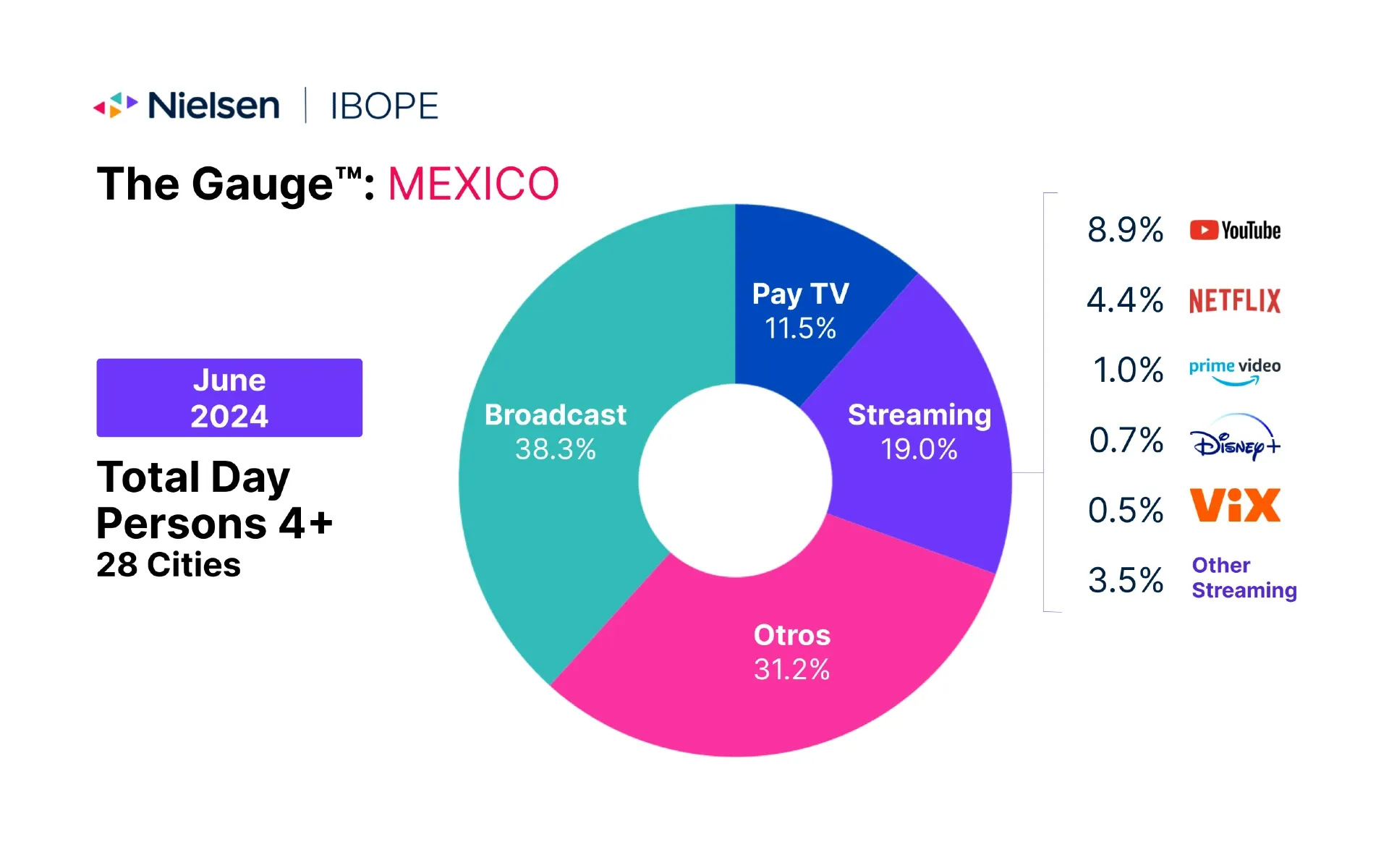Nielsen report reveals shifting TV landscape in Mexico for June 2024
Nielsen's The Gauge shows streaming gains in Mexico, reaching 19% of TV viewing time, with Netflix leading the growth.

Nielsen IBOPE this month released its latest report on television viewing habits in Mexico, revealing significant shifts in how audiences consume content across various platforms. The Gauge, Nielsen's comprehensive snapshot of TV usage, provides critical insights into the evolving media landscape, showcasing data from June 2024 that highlights the growing influence of streaming services in the Mexican market.
According to the report, which analyzes viewing patterns across 28 major cities in Mexico, streaming platforms captured 19% of total TV viewing time in June, marking a notable 1.4 percentage point increase from the previous month. This growth underscores the rapid adoption of streaming services among Mexican viewers and signals a potential paradigm shift in the country's television industry.
The data, collected from a sample of 450 broadband and non-broadband households, represents a universe of 58,404,410 people aged 4 and above. Nielsen IBOPE's methodology encompasses a comprehensive view of content consumption, including live viewing, time-shifted viewing (TSV) up to 7 days, and video-on-demand (VOD) across various platforms.
Breaking down the streaming category, YouTube emerged as the dominant player, claiming an 8.9% share of total TV viewing time. This substantial portion reflects the platform's popularity and its ability to cater to diverse content preferences. Netflix followed as the second most popular streaming service, securing a 4.4% share and exhibiting the most significant growth among streaming platforms with a 1.1 percentage point increase from the previous month.
Other notable streaming services included Amazon Prime Video with a 1.0% share, Disney+ at 0.7%, and ViX at 0.5%. The remaining streaming platforms collectively accounted for 3.5% of viewing time, indicating a fragmented market with numerous players vying for audience attention.
While streaming services showed impressive gains, traditional broadcast television remained the dominant form of content consumption in Mexico. The report indicates that broadcast TV commanded a substantial 38.3% of total viewing time. This figure includes live and time-shifted viewing of open TV channels broadcast content, regardless of the platform used for viewing, such as linear or recorded signals, streaming platforms, or online transmission of TV signals.
Pay TV services secured 11.5% of the viewing share, encompassing live and time-shifted viewing of Pay TV channels' broadcast content. This category also includes viewership across various platforms, mirroring the methodology applied to broadcast TV measurement.
An intriguing aspect of the report is the "Otros" (Others) category, which accounted for a significant 31.2% of viewing time. This diverse category includes live audience of linear content from TV channels not referenced or disaggregated in Nielsen IBOPE's official TV audience measurement study, usage of peripheral devices like game consoles and Blu-ray players when not streaming video content, and periods of non-audio activity detected by people meters.
The growing prominence of streaming services in Mexico aligns with global trends in media consumption. As high-speed internet becomes more widely available and affordable across the country, viewers are increasingly turning to on-demand content that offers flexibility and personalization. This shift presents both opportunities and challenges for content creators, advertisers, and traditional media companies operating in the Mexican market.
For advertisers, the fragmentation of viewership across multiple platforms necessitates a reevaluation of marketing strategies. The rise of streaming services, particularly those with ad-supported tiers, opens new avenues for targeted advertising.

